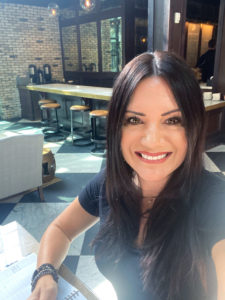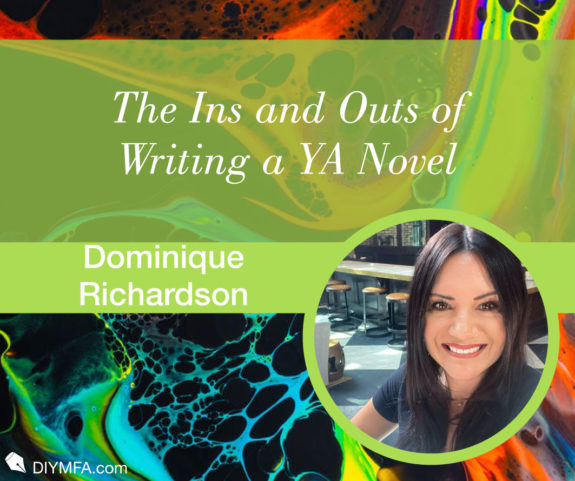So you want to write a young adult novel, but what exactly does that entail? Maybe you fell head over heels for the all-encompassing magic of first love in Twilight, or the pull yourself up by your bootstraps and conquer the world heroine in Hunger Games, or maybe it was the found family and self-discovery journey you lived when reading Divergent.
Or maybe you got hooked on a BookTok sensation like Inheritance Games, These Violent Delights, or They Both Die at the End.
Whatever it was that led you to wanting to write for young adults, you’ll need to understand some basics to write in this exciting space.
Guess What? It’s Not a Genre
One of the first things to understand about young adult is that it is not a genre. It’s actually an audience, just like adult books are referring to the audience. A book written for young adults will fall into one of many genres, such as romance, fantasy, or thriller.
Thinking of it as an audience will also help you get into the right mindset to write for teens. And writing for teens can be a rewarding journey as you can build a rabid fan base who will be loyal to your main character (especially if you write a series), share your work with their friends, and stay up into the wee hours of the night reading by flashlight.
Make Sure You Get Several Things Right
There are a few basics you need to nail down when you’re developing your YA novel. They are as follows:
Age of Your Protagonist.
Think high school when you’re writing young adult. Since kids typically “read up” in age, reading stories about kids older than they are, you should aim for your main character to be between 15 to 18, with some young adult books, especially in fantasy, having protagonists as 19.
Younger protagonists, that fall in the age range of 11 to 14, will typically belong in the Middle Grade category—think Harry Potter when he first gets to Hogwarts.
Mind Your Word Count.
You’ll want to keep your manuscript between 70,000 to 90,000 words. Fantasy and science fiction can skew higher than this, but books spilling over 100,000 words are usually reserved for seasoned authors with built in fan bases.
Mary Cole, author of Writing Irresistible Kidlit, offers this advice for sticking to the shorter word counts, “It’s always easier to add just the right thing to a sleek and streamlined project than it is to cut from an overlong one.”
If you do choose to go over in word count, remember it might be to your own peril because the truth is, longer manuscripts are harder to sell.
Remember You’re Writing for Today’s Teens.
Avoid setting the story in the same decade you were in high school (unless you just graduated, then have at it). Believe it or not, teen stories set in the 80’s or 90’s would more than likely be considered historical fiction, not a young adult novel for today’s teen audience. You’ll want to write in either modern or future time periods for this market.
Understand the Teen Mindset.
Young adults are starting to step away from their parents and figuring out how they fit in the world beyond their family. Being a teenager is an all-consuming stage of life, filled with all of the firsts happening in rapid succession.
Teens also start to see the darker side of life for the first time, and fiction can be a safe place for them to explore these issues, explains Cole.
Since teens are naturally in a stage of constant self-reflection, it makes sense that the stories themselves are also full of self-reflection and internality. Because of this, YA novels are often told from the first-person point of view.
Sex, Drugs, and Rock and Roll…Yes, No, Maybe?
The question of content is something you should strongly consider up front. Many of today’s books written for the young adult audience deal with real issues, and because of this, real content is permissible (content defined as sex, drug and alcohol use, and violence).
Although there are books in the young adult section that would make any adult’s cheeks blush, take care if you’re considering writing explicit scenes, staying away from erotica. Since teens are exploring their own sexuality, the lines are fuzzy and you might be surprised at what you find on the page.
The reality is most books on the young adult shelves will have a love story in it whether it’s the main plot or a subplot because romantic relationships are important to teens, bordering on obsessively important. I mean, you remember your high school crushes as clearly as I remember mine, right?
The same goes for drugs and alcohol. It is permissible in young adult, but take care when adding edgier elements to your work ensuring it is essential to telling your story. There are some publishers that will steer clear of substance use and many others who publish books exploring this side of life.
Violence and profanity are also allowed, but typically not to the level a George R.R. Martin novel might take it.
A great way to gauge what is allowed for the young adult audience is to read widely in the genre you wish to write in, which is a central tenet to the DIY MFA approach to your writing career. What level of content you might see in a young adult fantasy novel will differ from what you’ll see in a young adult contemporary. You’ll develop a sixth sense for what content works and what doesn’t and see how there truly is a wide range permitted for this audience.
The most important questions to ask yourself when adding edgy elements to your story are these: Is this level of graphic content needed to tell my story authentically? Or could I dial it back and still achieve the same effect?
Are You Telling Your Own Story?
You’re writing fiction not memoir, so your initial response to this question should be, no, I’m making this up as I go along, nothing is real except in my imagination. Yet, it’s more complicated than this.
In September 2015, the hashtag #ownvoices was born, used by the author Corinne Duyvis to identify books written by diverse authors whose main characters shared the author’s identity. This, coupled with the movement started by We Need Diverse Books, a grassroots organization focused on advocating for more books written by authors of diverse backgrounds, has changed the marketplace for young adult in a meaningful way.
Today, shelves are lined with stories where every kid should be able to see themself on the page. There is still a lot of work to do, but great strides have been made over the past several years to make sure there is representation across the board.
And this brings us to the point of this section: When developing your main character, it is incredibly important that you choose their identity with care.
Today’s young adult reader is looking for authenticity, and they want to know the person telling the story truly understands the journey the main character is growing through. And to avoid the harmful perpetuation of stereotypes and shallow treatment of diverse experiences that have too often occurred in the past, publishers and readers are looking for stories told from the experience and identity an author shares with the main character.
That being said, even if you are telling your story from your own experience, as of June 2021, We Need Diverse Books and the market at large started to reduce its usage of the term #ownvoices. Because the term expanded to become a “catch all marketing term by the publishing industry,” use of it started to raise “issues due to the vagueness of the term, which has then been used to place diverse creators in uncomfortable and potentially unsafe situations,” explained Alaina Lavoie, in this article from We Need Diverse Books. Instead of #ownvoices, choose to use the description the author identifies themselves as, such as in my case “Lebanese-Jamaican Author.”
For further discussion on why writing from your experience is important, check out this article by Colice Sanders on the DIY MFA website It’s Messy in the Middle: Unpacking Cultural Appropriation. Sanders does an incredible job of explaining why representation matters, and also, if you do choose to write outside your experience, she offers several great tips on how to do it the right way.
To Help You On Your Way
If you want to dive deeper into the world of writing for young adults, then check out these books for an in-depth exploration of writing YA:
- Writing Irresistible Kidlit: The Ultimate Guide to Crafting Fiction for Young Adult and Middle Grade Readers by Mary Cole.
- Writing Great Books for Young Adults: Everything You Need to Know, from Crafting the Idea to Getting Published by Regina Brooks.
- Writing Young Adult Fiction for Dummies by Deborah Halverson.
- Save the Cat! Writes a Young Adult Novel by Jessica Brody (this one is a pre-order, but it’s worth the wait given Jessica’s written over 20 novels and is an excellent teacher).
In addition to the above books, Mary Cole also has a blog dedicated to Kid Lit, and you can read the young adult archives on her website.
If you love young adult and want to hear from some of the leading authors in the young adult space, then sign-up for my email list so you’ll be in the know when our show FIND YOUR FAIRYTALE launches, where we will interview young adult authors about their journey to find success in publishing.

Dominique Richardson is a Lebanese-Jamaican author and former CPA turned CEO of YA by the Bay, a 501c3 young adult book festival coming to Tampa, FL in October 2023. She’s worked in management across the business spectrum—from a Fortune 100 company to a Big 4 Accounting firm, from a tech start-up to several nonprofits. She spends her free time writing books and passing on her love of unicorns to her twin boys. Dominique presents #DomsDownload on FIND YOUR FAIRYTALE, the forthcoming show for YA by the Bay, breaking down books that help people live their best lives.
You can find her on her website or follow her on Twitter, Instagram, and TikTok. Also, if you love young adult and want to hear from some of the leading authors in the young adult space, then sign-up for Dominique’s email list.







